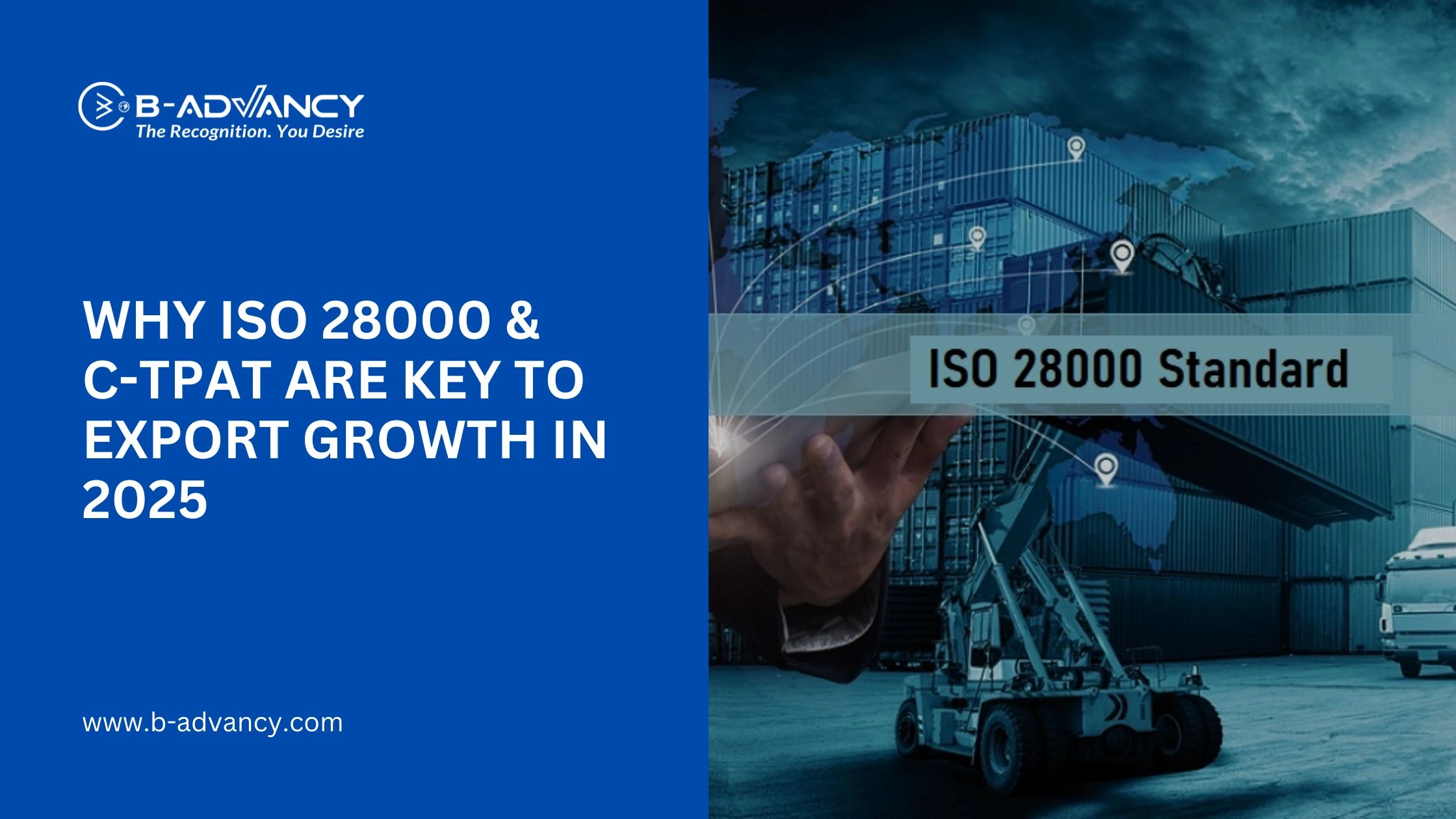
In 2025, global trade is witnessing unprecedented shifts—fueled by geopolitical uncertainty, cybersecurity threats, and rising customer expectations. Amid this evolving landscape, two standards have emerged as critical pillars for securing supply chains and accelerating export opportunities: ISO 28000 and C-TPAT (Customs-Trade Partnership Against Terrorism).
Together, they not only enhance the credibility and trustworthiness of exporters but also open gateways to smoother customs clearance, reduced risk, and better market access.
ISO 28000 is an international standard that specifies the requirements for a security management system in the supply chain. It helps organizations identify and manage threats such as terrorism, fraud, piracy, and theft throughout the logistics lifecycle.
C-TPAT, initiated by U.S. Customs and Border Protection (CBP), is a voluntary supply chain security program that focuses on strengthening international supply chains and improving U.S. border security through trusted partnerships with private sector companies.
Countries are tightening import-export regulations to combat illegal trade, counterfeiting, and terrorism. ISO 28000 and C-TPAT act as compliance frameworks that demonstrate a company’s commitment to security and international legal standards, helping avoid penalties or shipment holds.
With the increase in cyberattacks and physical threats targeting supply chains, implementing these standards significantly reduces the risk of cargo theft, sabotage, or tampering. ISO 28000 provides a structured approach to risk assessment and mitigation, while C-TPAT ensures coordination with border security measures.
C-TPAT-certified companies often receive benefits such as fewer CBP inspections, priority processing at borders, and access to the Free and Secure Trade (FAST) lanes. These advantages translate into reduced shipping delays and faster delivery cycles—a major competitive edge in time-sensitive markets.
Many global buyers and trade partners now prioritize suppliers with security credentials. Adopting ISO 28000 and joining the C-TPAT program improves your company’s standing in supplier evaluations and strengthens your position when bidding for international contracts.
Consumers and partners are more conscious of ethical sourcing, product integrity, and business resilience. Compliance with ISO 28000 and C-TPAT sends a strong signal that your organization takes security and reliability seriously—an important consideration for long-term relationships.
Implementing both ISO 28000 and C-TPAT together brings a synergistic effect. ISO 28000 provides the internal framework to identify risks, set controls, and continuously improve supply chain security. C-TPAT adds an external layer of validation and partnership with customs authorities. When integrated, the result is a resilient, trusted, and responsive supply chain network.
Consider a UK-based electronics exporter shipping to North America and Asia. With ISO 28000, they can ensure all logistics service providers, storage facilities, and packaging lines follow the same security protocols. Simultaneously, being C-TPAT certified allows their goods to be fast-tracked through U.S. customs. The outcome? Shorter transit times, lower insurance premiums, fewer losses, and higher customer satisfaction—all contributing to stronger export growth.
As 2025 progresses, supply chain security will no longer be optional—it will be a mandate. Companies that act early and align with international standards like ISO 28000 and C-TPAT are better equipped to expand globally, win trust, and adapt to changing trade dynamics.
Whether you're an SME aiming to scale exports or a large enterprise streamlining logistics, these certifications are not just badges—they are strategic tools for sustainable growth in global markets.